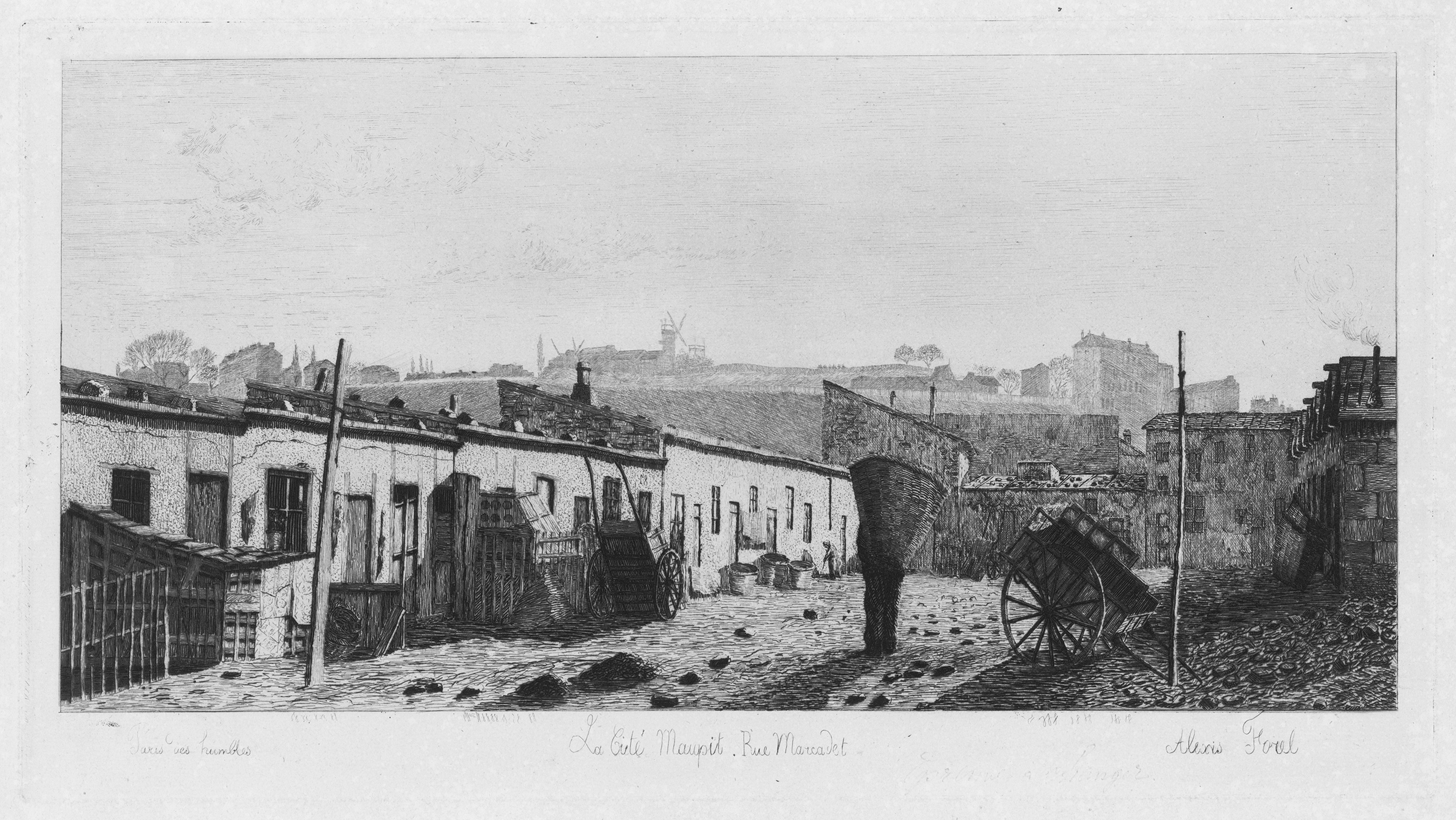Loading the page ...
Alexis Forel
(1852 Lully near Morges – 1922 Morges)
La Cité Maupit. Etching. 23 x 41.7 cm. Circa 1885. Beraldi 2.
Having trained as a chemist, Swiss-born Alexis Forel first engaged in artistic activities in the early 1880s. In 1881 he moved to Paris, where he occupied the studio formerly used by Eugène Delacroix and made friends, among others, with Félix Hilaire Buhot. Forel’s oeuvre consists for the most part of etchings, which he often made after nature, featuring picturesque scenes from Paris, Brittany and the environs of Lausanne. His printed oeuvre, which reflects the influence of works by Charles Meryon, quickly found favour in Paris. Between 1882 and 1890 he regularly exhibited his works at the Paris Salon and his prints began to be issued by various publishers, among them the prominent New York art dealer, Frederick Keppel. However, a serious illness brought his promising career to an abrupt end, the paralysis he suffered subsequently restricting his activities to those of an art critic.
The present, extremely rare etching by Forel shows the Cité Maupit in the Rue Marcadet in Paris, one of the so-called “cités des chiffoniers” or rag collectors’ villages which sprang up on the outskirts of the French capital in the 19th century. Pictured in the foreground are the hovels inhabited by the poorest of the poor to which a rag collector with a pannier on his back is returning after his day’s work. The delicately and scrupulously rendered Butte Montmartre with its characteristic windmills rises up steeply on the horizon. The subtle and wonderfully atmospheric panorama is an important contemporary history document in that it depicts a forgotten spot in the surroundings of Montmartre, where at the same time Vincent van Gogh produced the first of his works in Paris.
A very fine, wonderfully inky and contrasting impression with wide margins. Minor traces of handling, otherwise in excellent condition. Literature: Alain Faure, “Classe malpropre, classe dangereuse ? Quelques remarques à propos des chiffonniers parisiens au 19e siècle et de leurs cites”, in: Recherches, 29, December 1977, pp. 79–102.
Contact us for further information